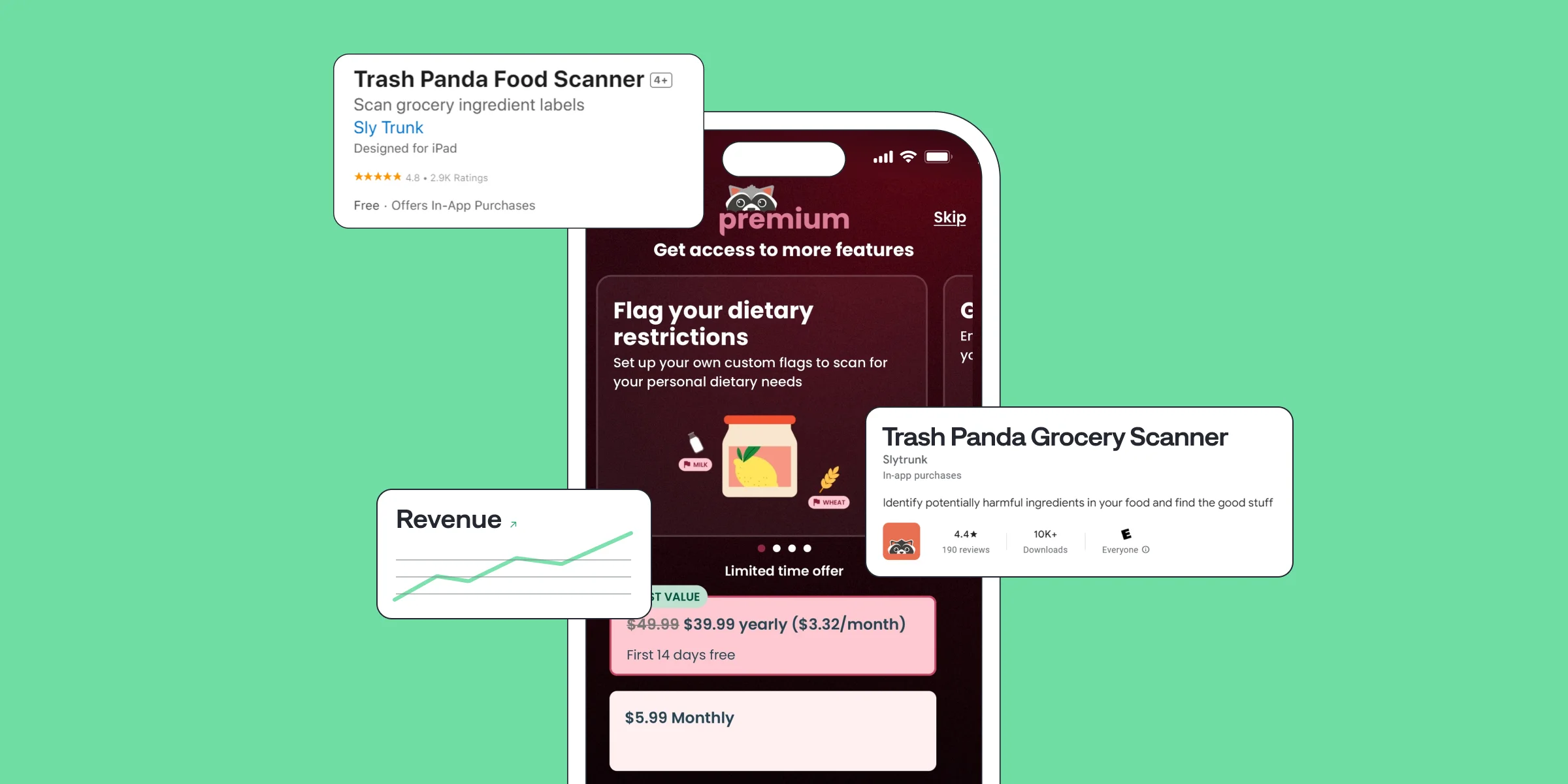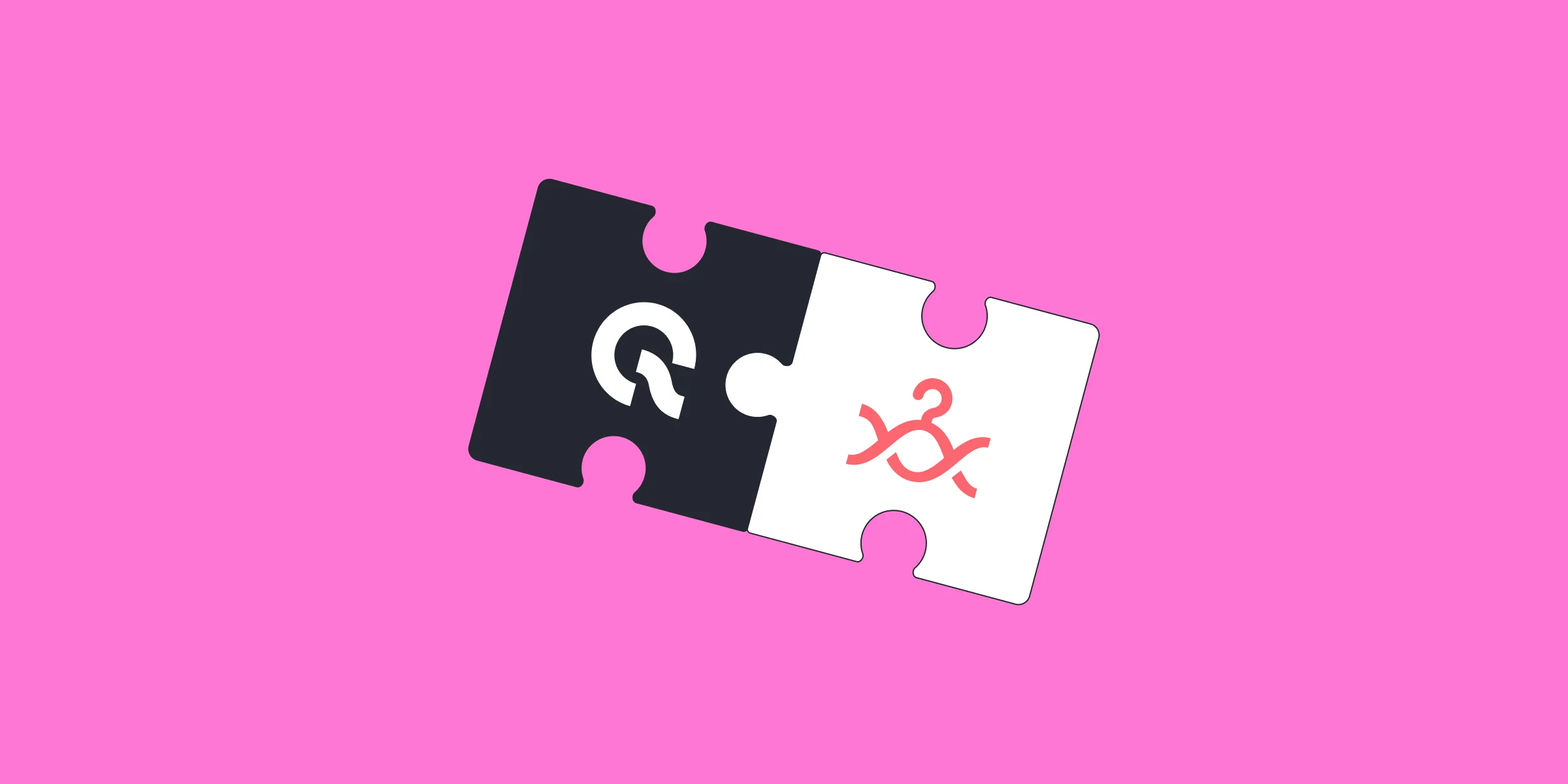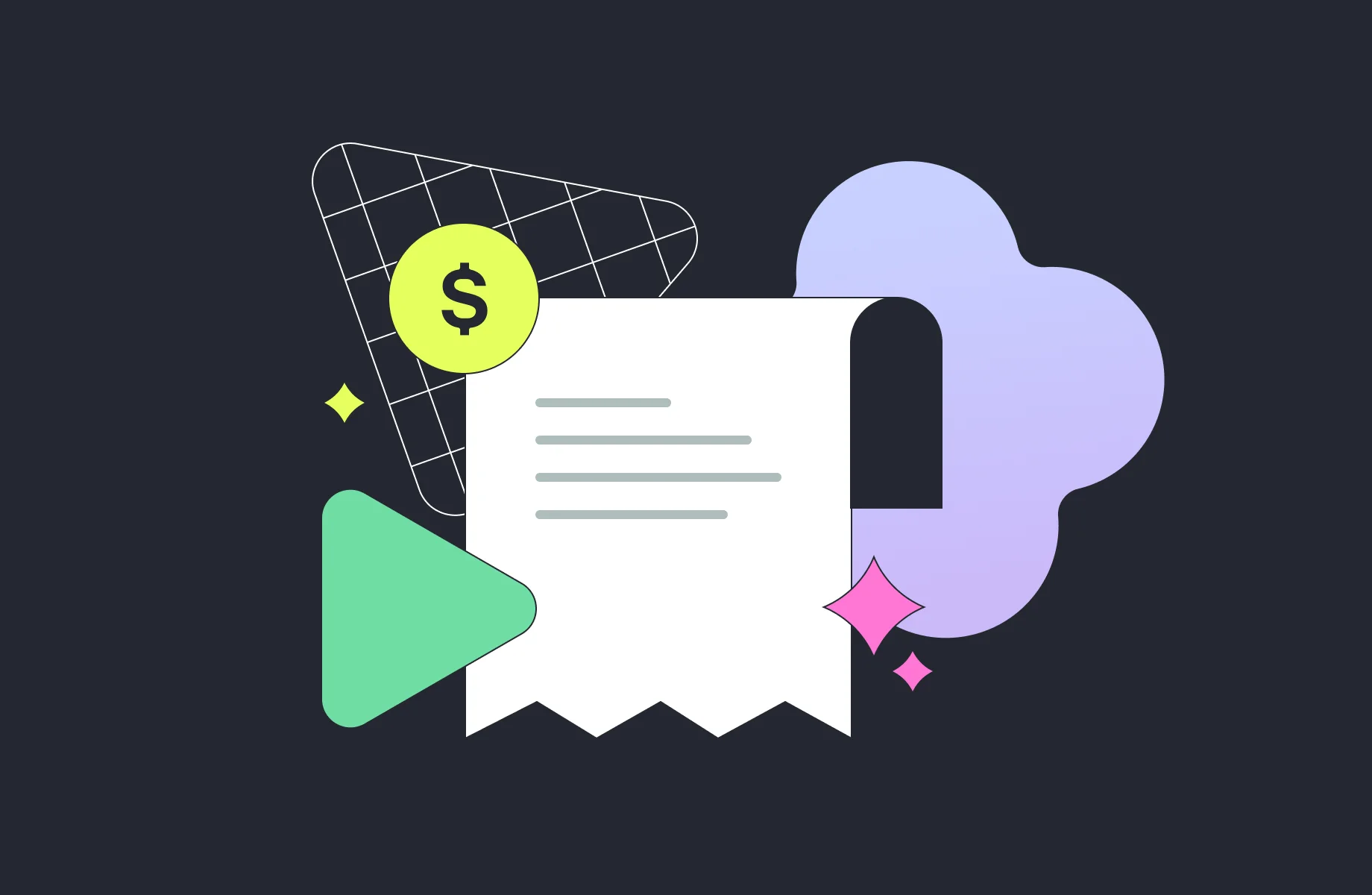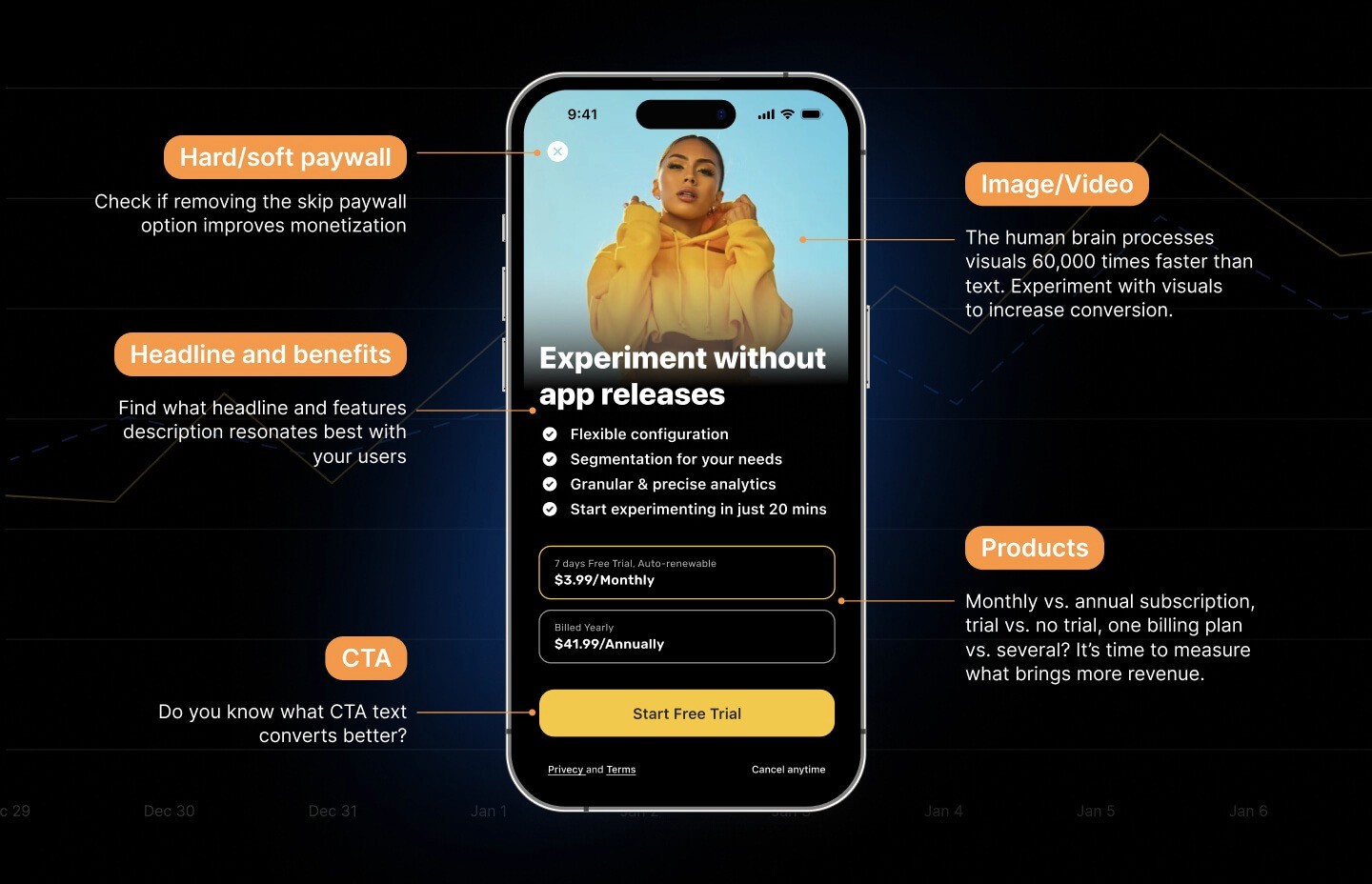How to determine Apple and Google Stores commission rates for in-app purchases (and why it is not that easy as it seems)

Michael
Oct 25, 2021
Apple App Store and Google Play Store provide developers with a platform for distributing applications under very certain, harsh terms. Some of these conditions concern the income that developers receive from users for accessing the application’s functions. All transactions have to go through the store, no direct transfers are allowed, and the commission is subtracted from the amounts spent by customers.
The service fee paid by the developer is either 15% or 30% of the transferred amount, whether it is a one-time purchase, a subscription, or a renewal.
Considering that the developer’s profit may not exceed more than a few percent of the proceeds, accurate accounting for these amounts seems like a very sensible thing. Today we are going to discuss how to determine app store commission rates for subscriptions apps correctly and what factors affect your total revenue.
Before we move further, worth mention that both Apple and Google have they own payout calendar schedule. Find more here: Apple Fiscal Calendar and Google Payouts Calendar.

Actual conditions of App Stores
Factors the affect App Stores commissions
In addition to conditions that were discussed above, commissions depend on several factors:
revenue (under or above $1M);
the type of operation;
the duration of the subscription for a specific user;
availability of free periods;
subscription gaps;
cancellation of the subscription;
cancellation of payment;
switching to another subscription;
participation in a commission discount program (important: you should be enrolled in the program);
whether the developer is an Amazon company – for which Apple has a reduced rate – or not.
Any paid subscriptions within one group (“subscription group”) and renewal of the subscription under the Billing Grace Period program are taken into account as a continuation of the period. Free trials (bonus periods) are not counted.
Let’s analyze the listed factors in more detail.
Operation type (one-time transaction or subscription)
A discount based on the duration of the subscription (for Apple – 15% for each user who subscribed for more than 1 year) is valid only for subscriptions with duration. Well, you get the idea. Therefore, it makes sense for this discount to take into account the renewal and cancellation operations of auto-renewing subscriptions, rather than one-time purchases.
Duration of the purchased subscription
The subscription period is counted separately for each user of the application. The rules are slightly different for Apple and Google, but they have the same essence: the discount is applied when the subscription period (taking into account all the features described below) reaches the 12-month period. As Google announced, since January 2022 the service fee for all subscriptions on Google Play dropped to 15%, starting from day one.
Free and promo periods
When checking a 12-month subscription, only the part of it which has actually been paid by the customer is taken into account. Thus, the introductory pricing period is included in the subscription period, while the free trial (bonus period) is ignored. Google also has additional free renewals (deferred billing) that are not included in the subscription period.
Subscription gaps and their types
An active subscription may have gaps both in the billing retry and in the provision of the subscription service (account hold). Depending on the settings, in case of non-payment, a grace period may be in effect, depicting a regular extension for another period (for several days, while the service is vainly trying to debit the user’s card).
To calculate the period of subscription-with-breaks, a general rule is applied: only paid periods are taken into account (including the grace period, if it was paid). An unpaid break is excluded from the period, and if it lasts more than 60 days, then the entire period is reset. The same applies to re-subscription canceled earlier (re-sign up).
Canceled user subscriptions
Canceled subscriptions are counted as the end of the general term or as a subscription break in the case that there is a re-subscription within 60 days for the same product.
User canceled payments
After the cancellation of a payment with a refund, the canceled operation should be considered non-existent, and its validity period should not be used in the calculation of a full year. This can be difficult when the deadline has already been calculated, especially considering the delay between the cancellation operation and the actual refund.
It should be mentioned that Apple has implemented a subscription upgrade through a refund (see below).
User switching to another subscription
Apple subscriptions have an additional parameter (the subscription group) that is configurable when they are created. For Google, we can assume that all subscriptions of one application are in the same group.
Switching to a subscription with a change of group can be considered as a regular cancellation and a new subscription. This means that the total term of the old subscription ends, and the new one starts from zero.
Moving within the same group (Upgrade, Downgrade, Crossgrade) leads to a change in the period and/or the term of the subscription (Apple, Google). In this case, the total period is not interrupted.
Other discount programs
In addition to the already discussed App Store Small Business Program and Google Play 15% service fee there are more specific programs like Google Play Media Experience. This program encompasses apps like e-books and on-demand streaming music or video services, where the content costs account for the majority of sales. For such content-based apps and streaming services commission is fixed to 15%, and 10% starting 2022. Please take note that you should enroll in all of these programs according to their rules.
Summary
Taking all this into account, we can say that it is not an easy task to calculate the income even from one single purchase in an application. You need to know the parameters of the purchase itself (date, amount, currency, product …), and also the whole context: whether it was a renewal and how many paid subscription days were used, whether the product changed, and in what ways, whether the discount is available to the developer, and how much this discount has been “used up.”
Furthermore, additional fees of 5-20% are deducted from some purchases, depending on the country of the developer and the buyer (the amount changes from time to time [1] [2] [3]). In addition, the dynamics of the exchange rate has an impact for a number of countries: Apple calculates payments at the end of the month at the current exchange rate which could be different from those at the time of purchase; refunds are carried out in the payment currency, which in USD may not be the same amount as during purchase. You can find the actual Apple fiscal calendar here.
Many of these difficulties can be passed on to specialized subscription analytics services like Qonversion that process purchases through their systems. These systems save your time from developing a server application on your own, and from constantly monitoring changes in the rules of the game. Ping us to learn more on how we can help.
How to determine Apple and Google Stores commission rates for in-app purchases (and why it is not that easy as it seems)

Michael
Oct 25, 2021
Apple App Store and Google Play Store provide developers with a platform for distributing applications under very certain, harsh terms. Some of these conditions concern the income that developers receive from users for accessing the application’s functions. All transactions have to go through the store, no direct transfers are allowed, and the commission is subtracted from the amounts spent by customers.
The service fee paid by the developer is either 15% or 30% of the transferred amount, whether it is a one-time purchase, a subscription, or a renewal.
Considering that the developer’s profit may not exceed more than a few percent of the proceeds, accurate accounting for these amounts seems like a very sensible thing. Today we are going to discuss how to determine app store commission rates for subscriptions apps correctly and what factors affect your total revenue.
Before we move further, worth mention that both Apple and Google have they own payout calendar schedule. Find more here: Apple Fiscal Calendar and Google Payouts Calendar.

Actual conditions of App Stores
Factors the affect App Stores commissions
In addition to conditions that were discussed above, commissions depend on several factors:
revenue (under or above $1M);
the type of operation;
the duration of the subscription for a specific user;
availability of free periods;
subscription gaps;
cancellation of the subscription;
cancellation of payment;
switching to another subscription;
participation in a commission discount program (important: you should be enrolled in the program);
whether the developer is an Amazon company – for which Apple has a reduced rate – or not.
Any paid subscriptions within one group (“subscription group”) and renewal of the subscription under the Billing Grace Period program are taken into account as a continuation of the period. Free trials (bonus periods) are not counted.
Let’s analyze the listed factors in more detail.
Operation type (one-time transaction or subscription)
A discount based on the duration of the subscription (for Apple – 15% for each user who subscribed for more than 1 year) is valid only for subscriptions with duration. Well, you get the idea. Therefore, it makes sense for this discount to take into account the renewal and cancellation operations of auto-renewing subscriptions, rather than one-time purchases.
Duration of the purchased subscription
The subscription period is counted separately for each user of the application. The rules are slightly different for Apple and Google, but they have the same essence: the discount is applied when the subscription period (taking into account all the features described below) reaches the 12-month period. As Google announced, since January 2022 the service fee for all subscriptions on Google Play dropped to 15%, starting from day one.
Free and promo periods
When checking a 12-month subscription, only the part of it which has actually been paid by the customer is taken into account. Thus, the introductory pricing period is included in the subscription period, while the free trial (bonus period) is ignored. Google also has additional free renewals (deferred billing) that are not included in the subscription period.
Subscription gaps and their types
An active subscription may have gaps both in the billing retry and in the provision of the subscription service (account hold). Depending on the settings, in case of non-payment, a grace period may be in effect, depicting a regular extension for another period (for several days, while the service is vainly trying to debit the user’s card).
To calculate the period of subscription-with-breaks, a general rule is applied: only paid periods are taken into account (including the grace period, if it was paid). An unpaid break is excluded from the period, and if it lasts more than 60 days, then the entire period is reset. The same applies to re-subscription canceled earlier (re-sign up).
Canceled user subscriptions
Canceled subscriptions are counted as the end of the general term or as a subscription break in the case that there is a re-subscription within 60 days for the same product.
User canceled payments
After the cancellation of a payment with a refund, the canceled operation should be considered non-existent, and its validity period should not be used in the calculation of a full year. This can be difficult when the deadline has already been calculated, especially considering the delay between the cancellation operation and the actual refund.
It should be mentioned that Apple has implemented a subscription upgrade through a refund (see below).
User switching to another subscription
Apple subscriptions have an additional parameter (the subscription group) that is configurable when they are created. For Google, we can assume that all subscriptions of one application are in the same group.
Switching to a subscription with a change of group can be considered as a regular cancellation and a new subscription. This means that the total term of the old subscription ends, and the new one starts from zero.
Moving within the same group (Upgrade, Downgrade, Crossgrade) leads to a change in the period and/or the term of the subscription (Apple, Google). In this case, the total period is not interrupted.
Other discount programs
In addition to the already discussed App Store Small Business Program and Google Play 15% service fee there are more specific programs like Google Play Media Experience. This program encompasses apps like e-books and on-demand streaming music or video services, where the content costs account for the majority of sales. For such content-based apps and streaming services commission is fixed to 15%, and 10% starting 2022. Please take note that you should enroll in all of these programs according to their rules.
Summary
Taking all this into account, we can say that it is not an easy task to calculate the income even from one single purchase in an application. You need to know the parameters of the purchase itself (date, amount, currency, product …), and also the whole context: whether it was a renewal and how many paid subscription days were used, whether the product changed, and in what ways, whether the discount is available to the developer, and how much this discount has been “used up.”
Furthermore, additional fees of 5-20% are deducted from some purchases, depending on the country of the developer and the buyer (the amount changes from time to time [1] [2] [3]). In addition, the dynamics of the exchange rate has an impact for a number of countries: Apple calculates payments at the end of the month at the current exchange rate which could be different from those at the time of purchase; refunds are carried out in the payment currency, which in USD may not be the same amount as during purchase. You can find the actual Apple fiscal calendar here.
Many of these difficulties can be passed on to specialized subscription analytics services like Qonversion that process purchases through their systems. These systems save your time from developing a server application on your own, and from constantly monitoring changes in the rules of the game. Ping us to learn more on how we can help.
How to determine Apple and Google Stores commission rates for in-app purchases (and why it is not that easy as it seems)

Michael
Oct 25, 2021
Apple App Store and Google Play Store provide developers with a platform for distributing applications under very certain, harsh terms. Some of these conditions concern the income that developers receive from users for accessing the application’s functions. All transactions have to go through the store, no direct transfers are allowed, and the commission is subtracted from the amounts spent by customers.
The service fee paid by the developer is either 15% or 30% of the transferred amount, whether it is a one-time purchase, a subscription, or a renewal.
Considering that the developer’s profit may not exceed more than a few percent of the proceeds, accurate accounting for these amounts seems like a very sensible thing. Today we are going to discuss how to determine app store commission rates for subscriptions apps correctly and what factors affect your total revenue.
Before we move further, worth mention that both Apple and Google have they own payout calendar schedule. Find more here: Apple Fiscal Calendar and Google Payouts Calendar.

Actual conditions of App Stores
Factors the affect App Stores commissions
In addition to conditions that were discussed above, commissions depend on several factors:
revenue (under or above $1M);
the type of operation;
the duration of the subscription for a specific user;
availability of free periods;
subscription gaps;
cancellation of the subscription;
cancellation of payment;
switching to another subscription;
participation in a commission discount program (important: you should be enrolled in the program);
whether the developer is an Amazon company – for which Apple has a reduced rate – or not.
Any paid subscriptions within one group (“subscription group”) and renewal of the subscription under the Billing Grace Period program are taken into account as a continuation of the period. Free trials (bonus periods) are not counted.
Let’s analyze the listed factors in more detail.
Operation type (one-time transaction or subscription)
A discount based on the duration of the subscription (for Apple – 15% for each user who subscribed for more than 1 year) is valid only for subscriptions with duration. Well, you get the idea. Therefore, it makes sense for this discount to take into account the renewal and cancellation operations of auto-renewing subscriptions, rather than one-time purchases.
Duration of the purchased subscription
The subscription period is counted separately for each user of the application. The rules are slightly different for Apple and Google, but they have the same essence: the discount is applied when the subscription period (taking into account all the features described below) reaches the 12-month period. As Google announced, since January 2022 the service fee for all subscriptions on Google Play dropped to 15%, starting from day one.
Free and promo periods
When checking a 12-month subscription, only the part of it which has actually been paid by the customer is taken into account. Thus, the introductory pricing period is included in the subscription period, while the free trial (bonus period) is ignored. Google also has additional free renewals (deferred billing) that are not included in the subscription period.
Subscription gaps and their types
An active subscription may have gaps both in the billing retry and in the provision of the subscription service (account hold). Depending on the settings, in case of non-payment, a grace period may be in effect, depicting a regular extension for another period (for several days, while the service is vainly trying to debit the user’s card).
To calculate the period of subscription-with-breaks, a general rule is applied: only paid periods are taken into account (including the grace period, if it was paid). An unpaid break is excluded from the period, and if it lasts more than 60 days, then the entire period is reset. The same applies to re-subscription canceled earlier (re-sign up).
Canceled user subscriptions
Canceled subscriptions are counted as the end of the general term or as a subscription break in the case that there is a re-subscription within 60 days for the same product.
User canceled payments
After the cancellation of a payment with a refund, the canceled operation should be considered non-existent, and its validity period should not be used in the calculation of a full year. This can be difficult when the deadline has already been calculated, especially considering the delay between the cancellation operation and the actual refund.
It should be mentioned that Apple has implemented a subscription upgrade through a refund (see below).
User switching to another subscription
Apple subscriptions have an additional parameter (the subscription group) that is configurable when they are created. For Google, we can assume that all subscriptions of one application are in the same group.
Switching to a subscription with a change of group can be considered as a regular cancellation and a new subscription. This means that the total term of the old subscription ends, and the new one starts from zero.
Moving within the same group (Upgrade, Downgrade, Crossgrade) leads to a change in the period and/or the term of the subscription (Apple, Google). In this case, the total period is not interrupted.
Other discount programs
In addition to the already discussed App Store Small Business Program and Google Play 15% service fee there are more specific programs like Google Play Media Experience. This program encompasses apps like e-books and on-demand streaming music or video services, where the content costs account for the majority of sales. For such content-based apps and streaming services commission is fixed to 15%, and 10% starting 2022. Please take note that you should enroll in all of these programs according to their rules.
Summary
Taking all this into account, we can say that it is not an easy task to calculate the income even from one single purchase in an application. You need to know the parameters of the purchase itself (date, amount, currency, product …), and also the whole context: whether it was a renewal and how many paid subscription days were used, whether the product changed, and in what ways, whether the discount is available to the developer, and how much this discount has been “used up.”
Furthermore, additional fees of 5-20% are deducted from some purchases, depending on the country of the developer and the buyer (the amount changes from time to time [1] [2] [3]). In addition, the dynamics of the exchange rate has an impact for a number of countries: Apple calculates payments at the end of the month at the current exchange rate which could be different from those at the time of purchase; refunds are carried out in the payment currency, which in USD may not be the same amount as during purchase. You can find the actual Apple fiscal calendar here.
Many of these difficulties can be passed on to specialized subscription analytics services like Qonversion that process purchases through their systems. These systems save your time from developing a server application on your own, and from constantly monitoring changes in the rules of the game. Ping us to learn more on how we can help.
How to determine Apple and Google Stores commission rates for in-app purchases (and why it is not that easy as it seems)

Michael
Oct 25, 2021
Apple App Store and Google Play Store provide developers with a platform for distributing applications under very certain, harsh terms. Some of these conditions concern the income that developers receive from users for accessing the application’s functions. All transactions have to go through the store, no direct transfers are allowed, and the commission is subtracted from the amounts spent by customers.
The service fee paid by the developer is either 15% or 30% of the transferred amount, whether it is a one-time purchase, a subscription, or a renewal.
Considering that the developer’s profit may not exceed more than a few percent of the proceeds, accurate accounting for these amounts seems like a very sensible thing. Today we are going to discuss how to determine app store commission rates for subscriptions apps correctly and what factors affect your total revenue.
Before we move further, worth mention that both Apple and Google have they own payout calendar schedule. Find more here: Apple Fiscal Calendar and Google Payouts Calendar.

Actual conditions of App Stores
Factors the affect App Stores commissions
In addition to conditions that were discussed above, commissions depend on several factors:
revenue (under or above $1M);
the type of operation;
the duration of the subscription for a specific user;
availability of free periods;
subscription gaps;
cancellation of the subscription;
cancellation of payment;
switching to another subscription;
participation in a commission discount program (important: you should be enrolled in the program);
whether the developer is an Amazon company – for which Apple has a reduced rate – or not.
Any paid subscriptions within one group (“subscription group”) and renewal of the subscription under the Billing Grace Period program are taken into account as a continuation of the period. Free trials (bonus periods) are not counted.
Let’s analyze the listed factors in more detail.
Operation type (one-time transaction or subscription)
A discount based on the duration of the subscription (for Apple – 15% for each user who subscribed for more than 1 year) is valid only for subscriptions with duration. Well, you get the idea. Therefore, it makes sense for this discount to take into account the renewal and cancellation operations of auto-renewing subscriptions, rather than one-time purchases.
Duration of the purchased subscription
The subscription period is counted separately for each user of the application. The rules are slightly different for Apple and Google, but they have the same essence: the discount is applied when the subscription period (taking into account all the features described below) reaches the 12-month period. As Google announced, since January 2022 the service fee for all subscriptions on Google Play dropped to 15%, starting from day one.
Free and promo periods
When checking a 12-month subscription, only the part of it which has actually been paid by the customer is taken into account. Thus, the introductory pricing period is included in the subscription period, while the free trial (bonus period) is ignored. Google also has additional free renewals (deferred billing) that are not included in the subscription period.
Subscription gaps and their types
An active subscription may have gaps both in the billing retry and in the provision of the subscription service (account hold). Depending on the settings, in case of non-payment, a grace period may be in effect, depicting a regular extension for another period (for several days, while the service is vainly trying to debit the user’s card).
To calculate the period of subscription-with-breaks, a general rule is applied: only paid periods are taken into account (including the grace period, if it was paid). An unpaid break is excluded from the period, and if it lasts more than 60 days, then the entire period is reset. The same applies to re-subscription canceled earlier (re-sign up).
Canceled user subscriptions
Canceled subscriptions are counted as the end of the general term or as a subscription break in the case that there is a re-subscription within 60 days for the same product.
User canceled payments
After the cancellation of a payment with a refund, the canceled operation should be considered non-existent, and its validity period should not be used in the calculation of a full year. This can be difficult when the deadline has already been calculated, especially considering the delay between the cancellation operation and the actual refund.
It should be mentioned that Apple has implemented a subscription upgrade through a refund (see below).
User switching to another subscription
Apple subscriptions have an additional parameter (the subscription group) that is configurable when they are created. For Google, we can assume that all subscriptions of one application are in the same group.
Switching to a subscription with a change of group can be considered as a regular cancellation and a new subscription. This means that the total term of the old subscription ends, and the new one starts from zero.
Moving within the same group (Upgrade, Downgrade, Crossgrade) leads to a change in the period and/or the term of the subscription (Apple, Google). In this case, the total period is not interrupted.
Other discount programs
In addition to the already discussed App Store Small Business Program and Google Play 15% service fee there are more specific programs like Google Play Media Experience. This program encompasses apps like e-books and on-demand streaming music or video services, where the content costs account for the majority of sales. For such content-based apps and streaming services commission is fixed to 15%, and 10% starting 2022. Please take note that you should enroll in all of these programs according to their rules.
Summary
Taking all this into account, we can say that it is not an easy task to calculate the income even from one single purchase in an application. You need to know the parameters of the purchase itself (date, amount, currency, product …), and also the whole context: whether it was a renewal and how many paid subscription days were used, whether the product changed, and in what ways, whether the discount is available to the developer, and how much this discount has been “used up.”
Furthermore, additional fees of 5-20% are deducted from some purchases, depending on the country of the developer and the buyer (the amount changes from time to time [1] [2] [3]). In addition, the dynamics of the exchange rate has an impact for a number of countries: Apple calculates payments at the end of the month at the current exchange rate which could be different from those at the time of purchase; refunds are carried out in the payment currency, which in USD may not be the same amount as during purchase. You can find the actual Apple fiscal calendar here.
Many of these difficulties can be passed on to specialized subscription analytics services like Qonversion that process purchases through their systems. These systems save your time from developing a server application on your own, and from constantly monitoring changes in the rules of the game. Ping us to learn more on how we can help.
Start Now for Free
Or book a demo with our team to learn more about Qonversion
Start Now for Free
Or book a demo with our team to learn more about Qonversion
Start Now for Free
Or book a demo with our team to learn more about Qonversion
Read more
Read more

Trash Panda Maximizes App Revenue after Setting the Best Subscription Price with A/B Tests
Jul 8, 2024
Jul 8, 2024

How StyleDNA Saved 20% Development Time and Unlocked New Features
Jun 19, 2024
Jun 19, 2024

WWDC24 Updates for App Developers | What's new in Storekit 2 and App Store Server API?
Jun 17, 2024
Jun 17, 2024

How A/B Testing with Qonversion Helped Iben Sandahl’s Parenting App Double Their Sales
Jun 13, 2024
Jun 13, 2024

Trash Panda Maximizes App Revenue after Setting the Best Subscription Price with A/B Tests
Jul 8, 2024
Jul 8, 2024

How StyleDNA Saved 20% Development Time and Unlocked New Features
Jun 19, 2024
Jun 19, 2024

WWDC24 Updates for App Developers | What's new in Storekit 2 and App Store Server API?
Jun 17, 2024
Jun 17, 2024







